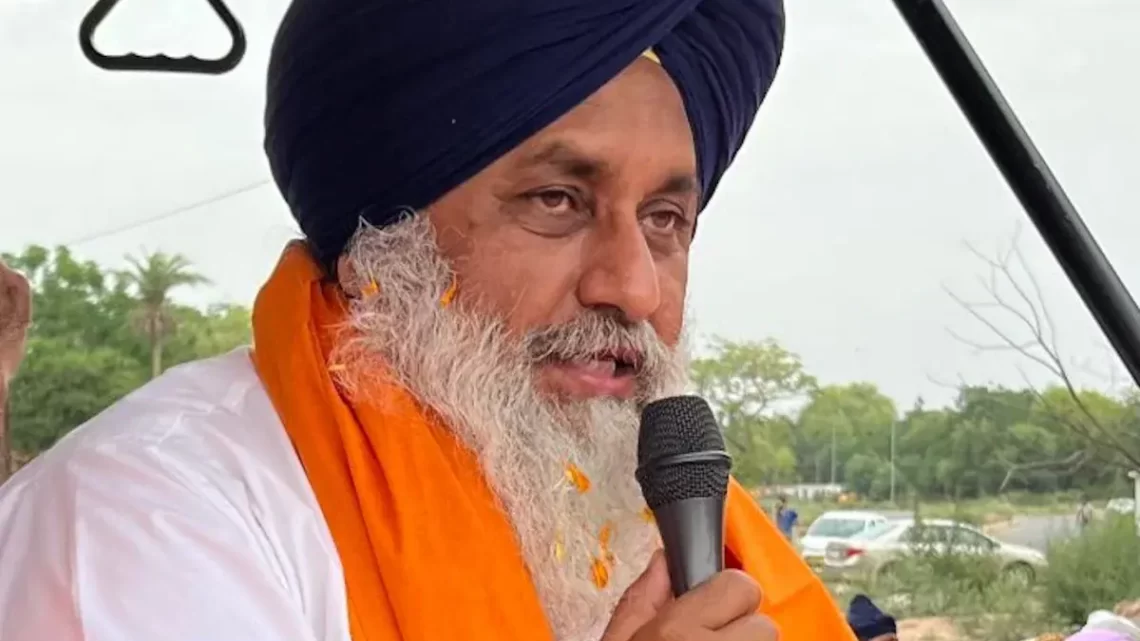
India: Akali Dal’s Manifesto: The Real Issue Lies Within, Not Across the Border
May 21, 2024The Shiromani Akali Dal (SAD) has recently revealed its electoral manifesto, making significant promises aimed at addressing long-standing grievances of the Punjabi community. Central to their agenda is the proposal to negotiate the transfer of Kartarpur Sahib from Pakistan to India through a mutual land exchange. Additionally, SAD leader Sukhbir Singh Badal has pledged to reinvigorate efforts to reintegrate Chandigarh and other Punjabi-speaking areas back into Punjab.
The story of Punjab is not merely one of territorial reduction and resource struggles; it is a narrative of resilient people committed to justice and self-governance. Historically known as the land of five rivers with fertile fields, Punjab’s expanse has significantly diminished. From a vast area of 202,000 square kilometres in 1966, Indian-administered Punjab has been reduced to about a quarter of its original size due to decisions by the central government. The formation of Haryana and Himachal Pradesh involved ceding 11 districts from Punjab, while Chandigarh, its capital, was placed under central administration. This not only led to geographical losses but also fragmented Punjabi culture, dispersed its population, and reduced its economic and agricultural resources.
Punjab’s agricultural sector, once the backbone of its economy, suffered greatly due to these territorial changes. The fertile lands that once nourished the nation were divided, leaving Punjab with a reduced capacity to sustain its own people. Adding to this hardship is the ongoing water dispute with Haryana over the Ravi and Beas rivers. Punjab asserts historical rights to these waters, crucial for its agriculture, but the construction of the Sutlej-Yamuna Link (SYL) Canal to divert water to Haryana has been met with strong opposition. The Sikh community fears this canal could exacerbate the region’s water scarcity, leading to a severe agricultural crisis.
Despite these challenges, the Sikh community remains respected and admired, particularly in Pakistan. Sikhs are seen as honest, brave, and straightforward, qualities that have fostered a positive perception. Strategically, many Pakistanis believe an independent Sikh state could benefit both regions by promoting trade and cooperation. This vision is reflected in initiatives like the Kartarpur Corridor, which allows Indian Sikh pilgrims to visit the Gurdwara Darbar Sahib in Pakistan without a visa. The expansion of the Baba Guru Nanak Darbar shrine from 5 to 975 acres underscores Pakistan’s commitment to welcoming Sikh pilgrims and fostering goodwill.
This mutual respect and strategic foresight suggest that land exchange issues between Pakistan and the Sikh community should be seen as opportunities rather than obstacles. The ultimate goal should be to establish Guru Nanak’s land as a free and autonomous region for Sikhs, ensuring harmonious relations with Pakistan. Similar to the European model where friendly borders foster cooperation, a positive relationship between Pakistan and a potential Sikh state could bring immense benefits to both sides.
In summary, the SAD’s manifesto reflects a broader struggle for justice and autonomy for Punjab. The proposal to reclaim lost territories and secure water rights is part of a larger vision to restore Punjab’s historical and cultural integrity. The commitment to strengthening ties with Pakistan through initiatives like the Kartarpur Corridor further highlights the potential for regional harmony and mutual benefit. Punjab’s journey is a testament to the resilience of its people and their unwavering pursuit of self-determination and justice.

